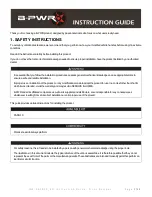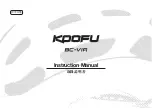
M.26
TE 250R - 310R 2013 I.E. / TE 310R 2013 I.E. USA
TC 250R 2013 - TC 250R 2013 I.E. USA
TXC 250R - 310R 2013 I.E. USA
H11129
ELECTRICAL SYSTEM
Workshop Manual Ed. 07-2012
Starting system inspection
Starter motor inspection (TE-TXC)
Remove the starter motor (1) as described in the relevant paragraph.
Whenever a starter motor fault is detected, check the starter motor as follows:
- connect a meter across ground and starter motor contact.
- Check for continuity between the positive pole and motor ground. If no conti-
nuity is found, replace the starter motor. On assembly, apply a small amount of
LOCTITE 243 to the starter motor retaining screws.
Starter motor
Rated voltage: 12V
Current draw: 350 W
No-load test
Voltage: 11.2 V
Current: 30 A
Speed: 12,000 rpm
Cranking test
Voltage: 10 V
Current: 80 A
Torque: 3.5 Nm - 0.35 Kgm - 2.5 ft/lb
Starter motor test curves (TE-TXC)
1 - Output power (W)
2- Torque (TQ)
3- RPM (N: rpm. x 1000)
4 - Light voltage (V)
5 - Charging current (A)
Solenoid starter inspection (TE-TXC)
Disconnect the cables at the battery negative terminal to avoid possible short
circuits during disassembly. Disconnect the starter relay connector (A).
Disconnect the starter motor and battery positive cable wires at relay end. Apply
12 Volts to relay terminals (1) and (2) and check for continuity between terminals
B-M.
Do not feed battery voltage to the relay longer than 5
seconds or the
relay might overheat, leading to winding damage. Use a multimeter to establish
whether the winding is open circuit or resistance exists. A winding in good condi
-
tion will give the following resistance readings.
Meter scale setting: Ohm
Starter relay resistance. Standard: 3-6 .
Solenoid starter wiring
diagram
1= GROUND
2= + 12 V
















































